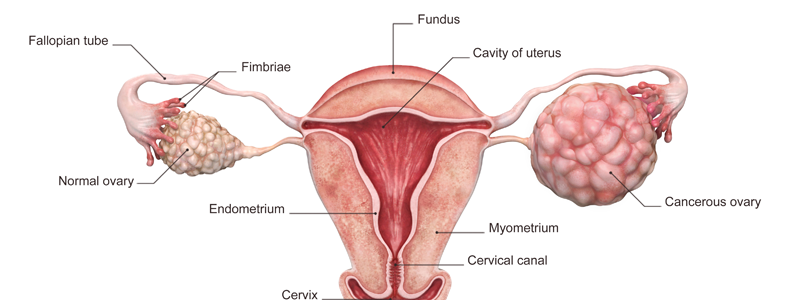
Ovarian tumors refer to abnormal growths in the ovaries, and they can be classified as benign or malignant. While some ovarian tumors are non-cancerous and pose little threat to health, others may be cancerous and require prompt medical attention. This article aims to provide insights into the types of ovarian tumors, their symptoms, and the diagnostic approaches used to assess them.
The majority of ovarian cancers are epithelial tumors, which originate from the cells that cover the outer surface of the ovary. These tumors can be further categorized into serous, mucinous, endometrioid, and clear cell subtypes.
These tumors arise from the cells that produce eggs within the ovaries. Germ cell tumors are more common in younger women and include teratomas, dysgerminomas, and yolk sac tumors.
Stromal tumors develop from the connective tissue cells that hold the ovary together and produce hormones. The most common stromal tumor is the ovarian fibroma.
These tumors have abnormal cells that are not cancerous but may progress to cancer in some cases. They are often found at an early stage and have a better prognosis than invasive cancers.
The symptoms of ovarian tumors can be subtle and may resemble other less severe conditions. Common symptoms include:
Persistent pain or discomfort in the pelvic or abdominal region may be indicative of an ovarian tumor.
Women with ovarian tumors may experience bloating or a feeling of fullness even after consuming small amounts of food.
Tumors can cause changes in bowel habits, such as constipation or diarrhea.
Pressure from ovarian tumors on the bladder can result in increased frequency of urination.
In some cases, ovarian tumors may lead to unexplained weight loss.
A pelvic examination allows healthcare providers to feel for any abnormalities or masses in the ovaries.
Transvaginal ultrasound and pelvic MRI can provide detailed images of the ovaries, helping to identify the size, location, and characteristics of tumors.
The CA-125 blood test measures the level of a protein that can be elevated in the presence of ovarian cancer. While not definitive, it can aid in diagnosis and monitoring.
In cases where a tumor is suspected to be cancerous, a biopsy may be performed to collect tissue samples for examination under a microscope.
In some instances, surgery may be necessary to visually inspect the ovaries, remove tumors, and determine the extent of the disease. This may involve laparoscopy or laparotomy.
The primary treatment for ovarian tumors is often surgery, where the surgeon aims to remove the tumor while preserving as much healthy ovarian tissue as possible. In some cases, a hysterectomy (removal of the uterus) may be recommended.
Chemotherapy may be prescribed to destroy cancer cells or shrink tumors before surgery. It is also used in cases of advanced or recurrent ovarian cancer.
Radiation therapy is less commonly used for ovarian cancer but may be recommended in specific situations to target and destroy cancer cells.
Ovarian tumors encompass a range of conditions with diverse characteristics and treatment approaches. Early detection and accurate diagnosis are crucial for effective management and improved outcomes. Regular gynecological check-ups, awareness of symptoms, and prompt medical attention when symptoms arise play vital roles in the early identification of ovarian tumors. Collaborative discussions between healthcare providers and patients are essential for tailoring an appropriate treatment plan based on the type and stage of the ovarian tumor.